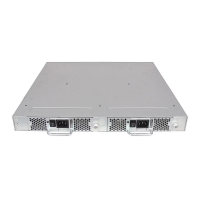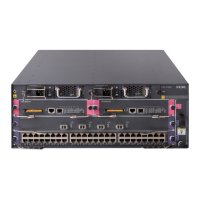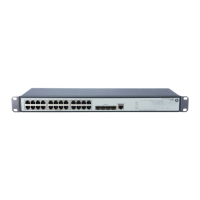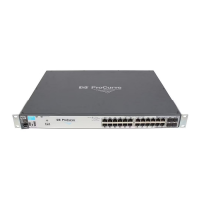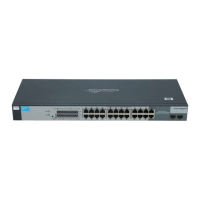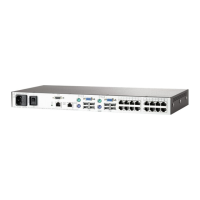44 Fabric OS Administrator’s Guide
53-1002446-01
Blade terminology and compatibility
3
The following example sets the speed for all ports on the switch to autonegotiate:
switch:admin> switchcfgspeed 0
Committing configuration...done.
Setting port speed for a port octet
You can use the portCfgOctetSpeedCombo command to configure the speed for a port octet. Note
that in a Virtual Fabrics environment, this command applies chassis-wide and not just to the logical
switch.
1. Connect to the switch and log in using an account with admin permissions.
2. Enter the portCfgOctetSpeedCombo command.
Example
The following example configures the ports in the first octet for combination 3 (support
autonegotiated or fixed port speeds of 16 Gbps and 10 Gbps):
switch::admin> portcfgoctetspeedcombo 1 3
Blade terminology and compatibility
Before configuring a chassis, familiarize yourself with the platform CP blade and port blade
nomenclature, as well as the port blade compatibilities. Table 5 includes core and CP blade
terminology and descriptions. Table 6 on page 45 includes port blade terminology and
descriptions.
TABLE 5 Core and CP blade terminology and platform support
Supported on:
Blade Blade ID
(slotshow)
DCX family DCX 8510 family Definition
CP8 50 Yes Yes Brocade DCX and DCX 8510 Backbone family control
processor blade. This CP supports all blades used in the
DCX and DCX 8510 Backbone families.
CORE8 52 Yes
DCX only
No A 16-port blade that provides 8 Gbps connectivity
between port blades in the Brocade DCX chassis.
CR4S-8 46 Yes
DCX-4S only
No A 16-port blade that provides 8 Gbps connectivity
between port blades in the Brocade DCX-4S chassis.
CR16-8 98 No Yes
DCX 8510-8 only.
A core blade that has 16x4 QSFPs per blade. It can be
connected to another CR16-8 or CR16-4 core blade.
CR16-4 99 No Yes
DCX 8510-4 only
A core blade that has 8x4 QSFPs per blade. It can be
connected to another CR16-4 or a CR16-8 core blade.

